"Painting, music and poetry came together in the courts of northern India from the sixteenth century in the production of paintings known as ragamala ('garland of ragas'). A raga is a musical phrase that evokes an emotional response in the listener, and is associated with a particular time of day, season and mood. 'Male' ragas were joined with 'female' raginis." [source]
"In [the ragamala] painting[s] each raga is personified by a colour, mood, a verse describing a story of a hero and heroine (nayaka and nayika), it also elucidates the season and the time of day and night in which a particular raga is to be sung; and finally most paintings also demarcate the specific Hindu deities attached with the raga, like Bhairava or Bhairavi to Shiva, Sri to Devi etc. The paintings depict not just the Ragas, but also their wives, (raginis), their numerous sons (ragaputra) and daughters (ragaputri).
The six principal ragas present in the Ragamala are Bhairava, Dipika, Sri, Malkaunsa, Megha and Hindola and these are meant to be sung during the six seasons of the year - summer, monsoon, autumn, early winter, winter and spring." [source]
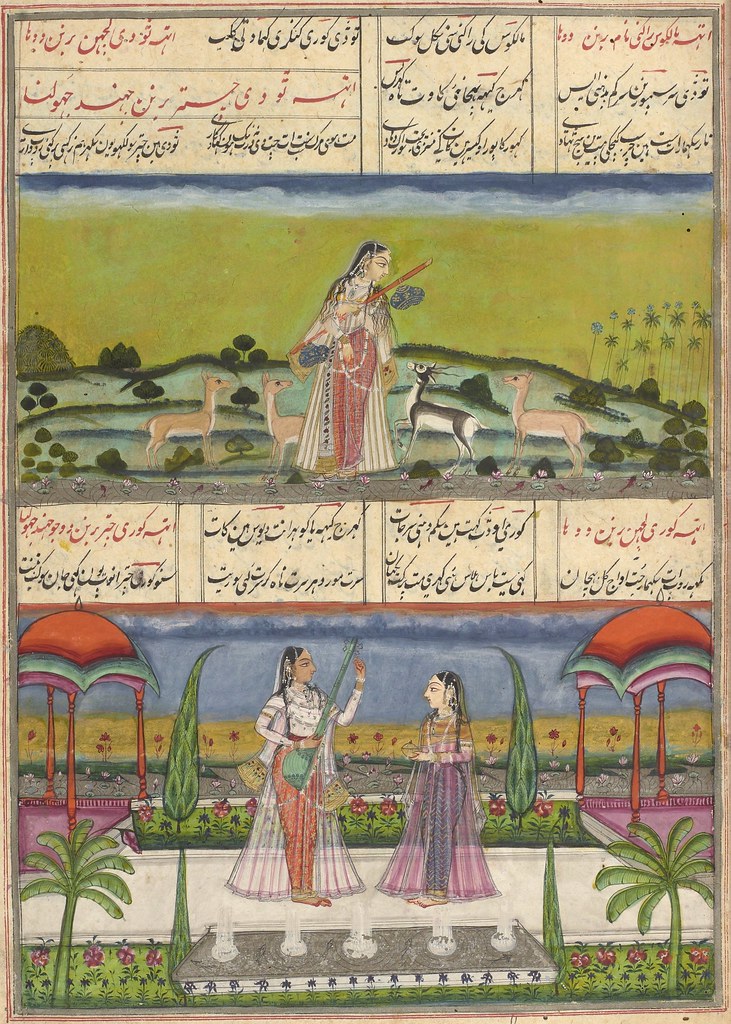
- Todi Ragini holding vina, with four gazelles, one black and white with horns
- Gauri Ragini holding lute, with female attendant

Raja Rao Rabanha (?) Bahadur (on elephant), with Khushhal Khan (below), and soldiers, led by an elephant with orange banner

Raja Rao Rabanha (?) Bahadur and Chanda Mimi (Bibi) Mah Nagabani (?), with attendants and red bird in cage
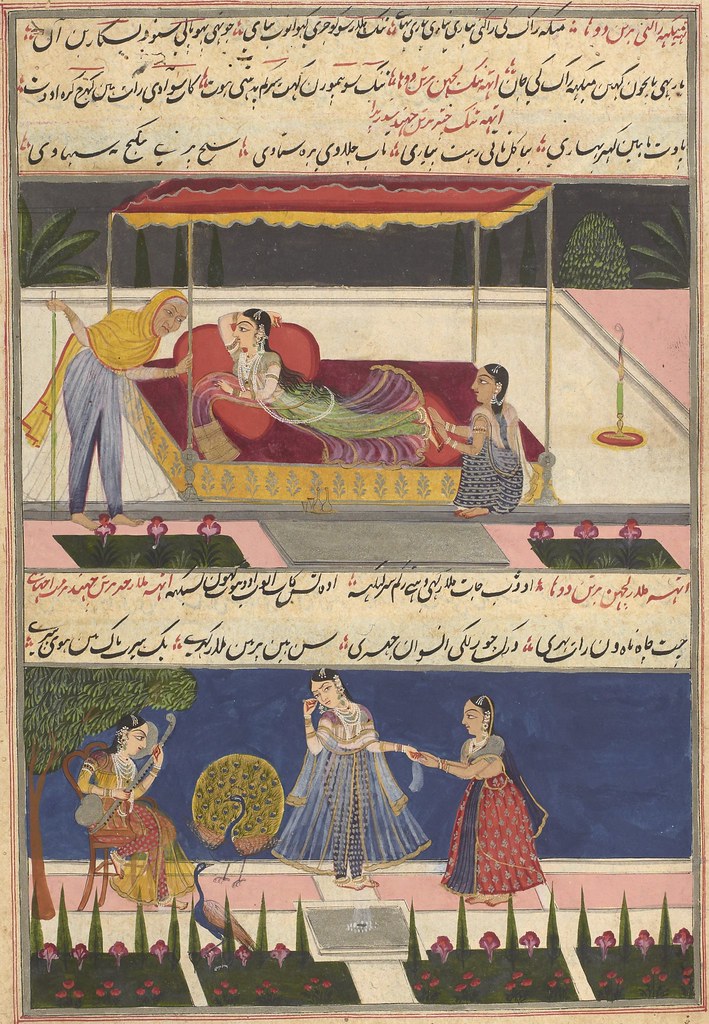
- Tanka Ragini reclining on bed, speaking with elderly woman, with female attendant massaging her feet
- Mallar Ragini, with female musician, female attendant massaging her hand, and two peacocks
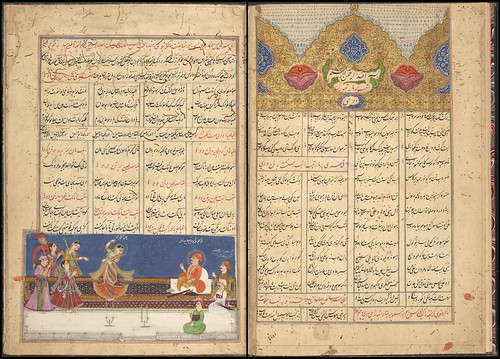
- Chanda Bibi dancing for the Raja
- Illuminated headpiece
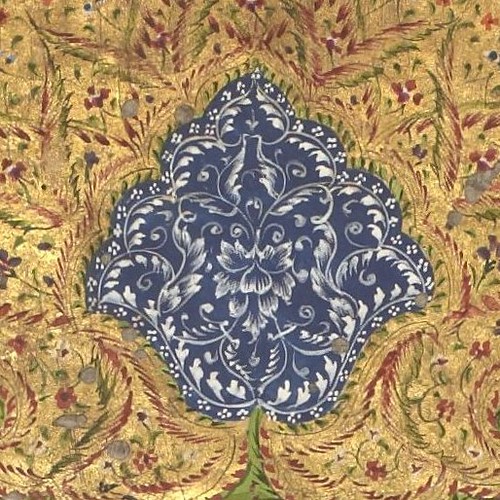
Detail from illuminated headpiece

- Desakh Ragini, with wrestlers,
jugglerPehlwani trainer, acrobat, and archer - Ramakali Ragini seated, with two female attendants
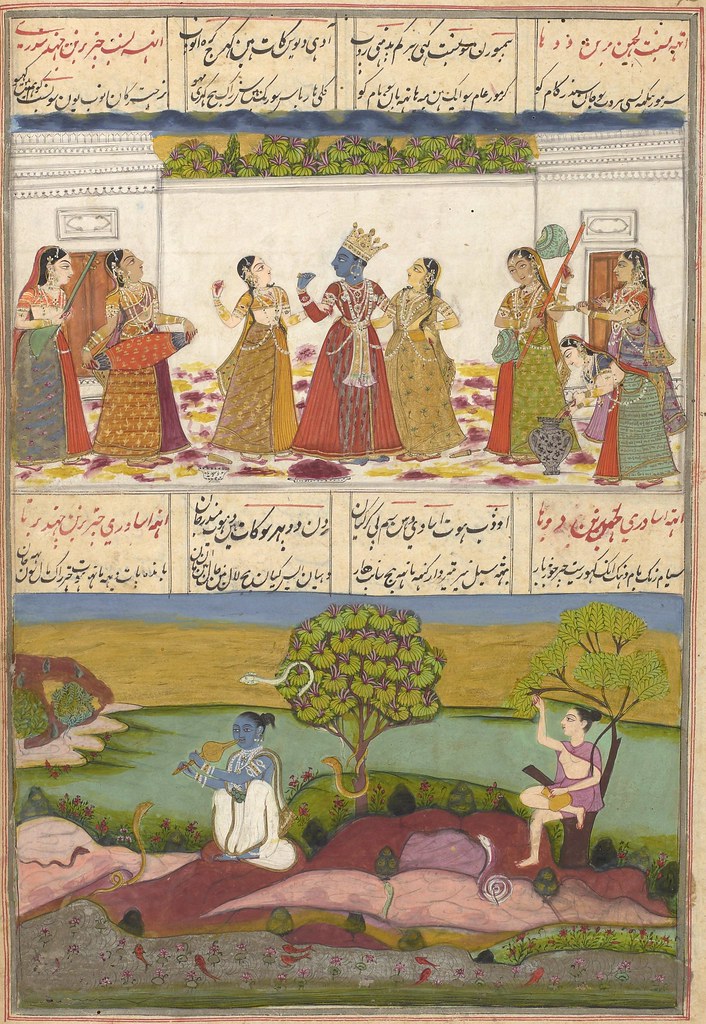
- Vasant Ragini, blue-skinned and crowned, with seven female musicians and dancers
- Asavari Ragini, blue-skinned, charming snakes and fish with wind instrument, with attendant sitting in tree

- Raja Rao Rabanha (?) Bahadur with Kurnool man and man with bird cage and bird on table
- Bhairav Raga, as Siva

- Dipak Raga riding elephant, with four female attendants (illustration of Divali)
- Sri Raga seated, with three female attendants, a musician playing a vina and a Kinnara (heavenly musician with a horse's head)
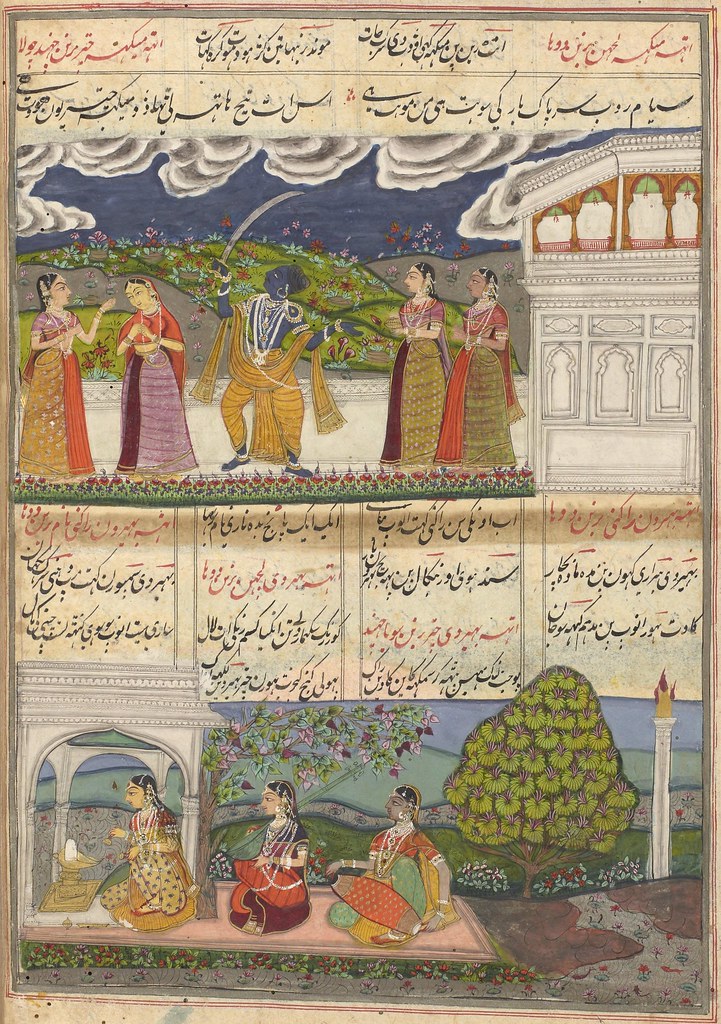
- Megha Raga, as Krishna, holding a saber, with four female attendants
- Bhairavi Ragini tending Shiva shrine, with two female attendants
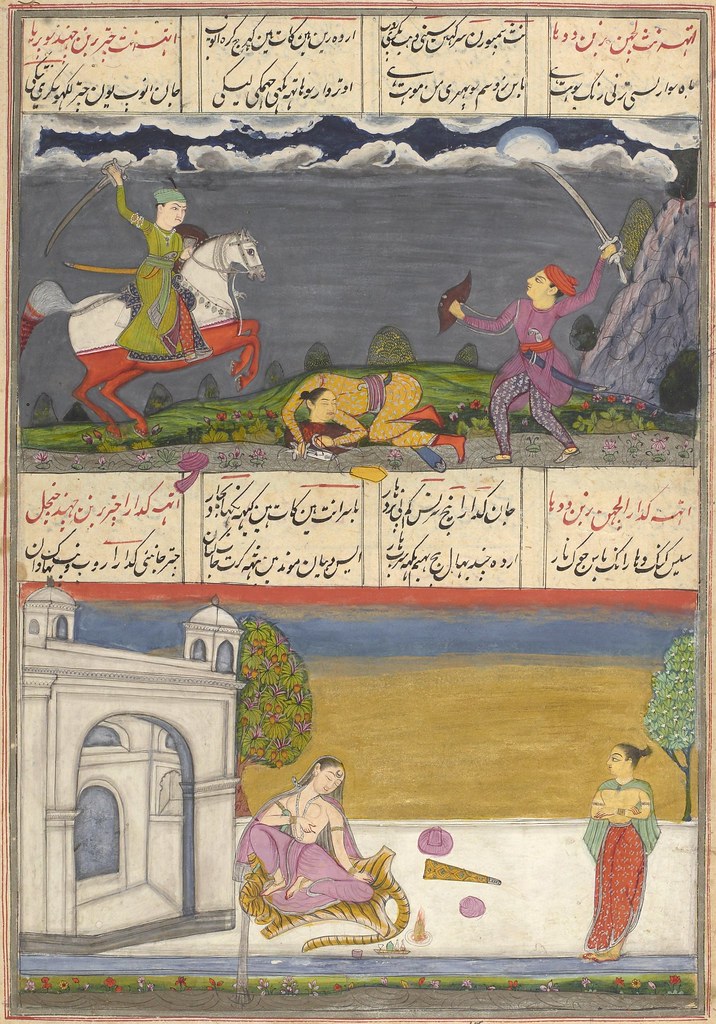
- Nat Ragini on horseback and holding a sword above decapitated body, about to attack a second enemy
- Kedara Ragini, wearing cape and culottes with a crescent moon on her forehead and sitting on tiger-skin run, with female attendant
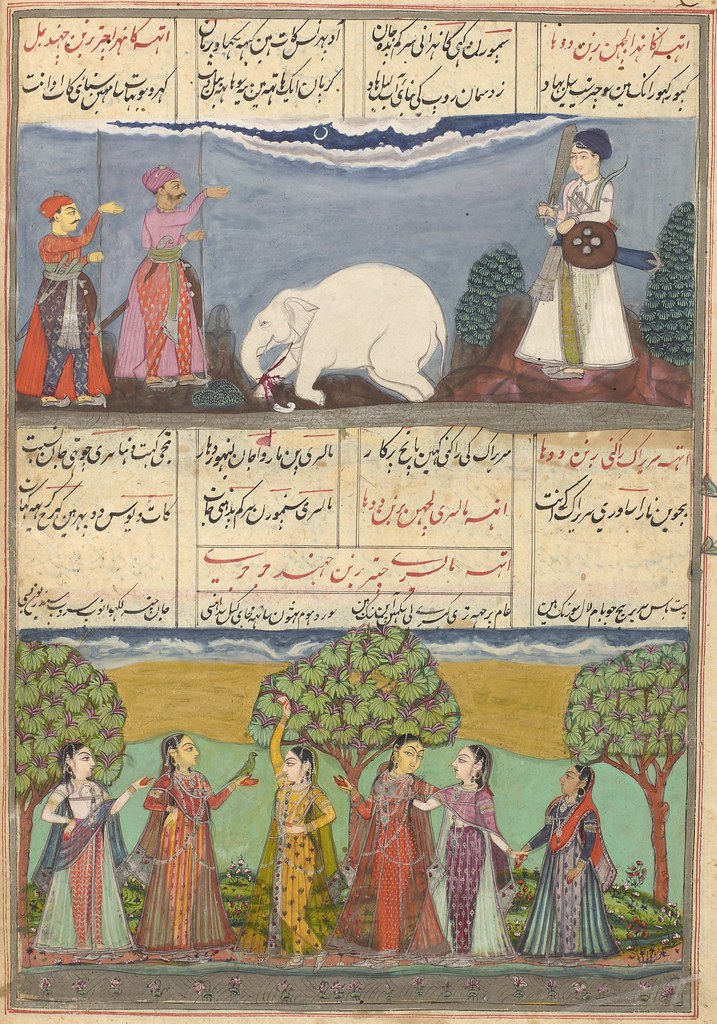
- Kanara Ragini holding sword and shield, with white elephant with severed tusk and two male attendants
- Malasri Ragini with five female attendants, with one presenting a green bird
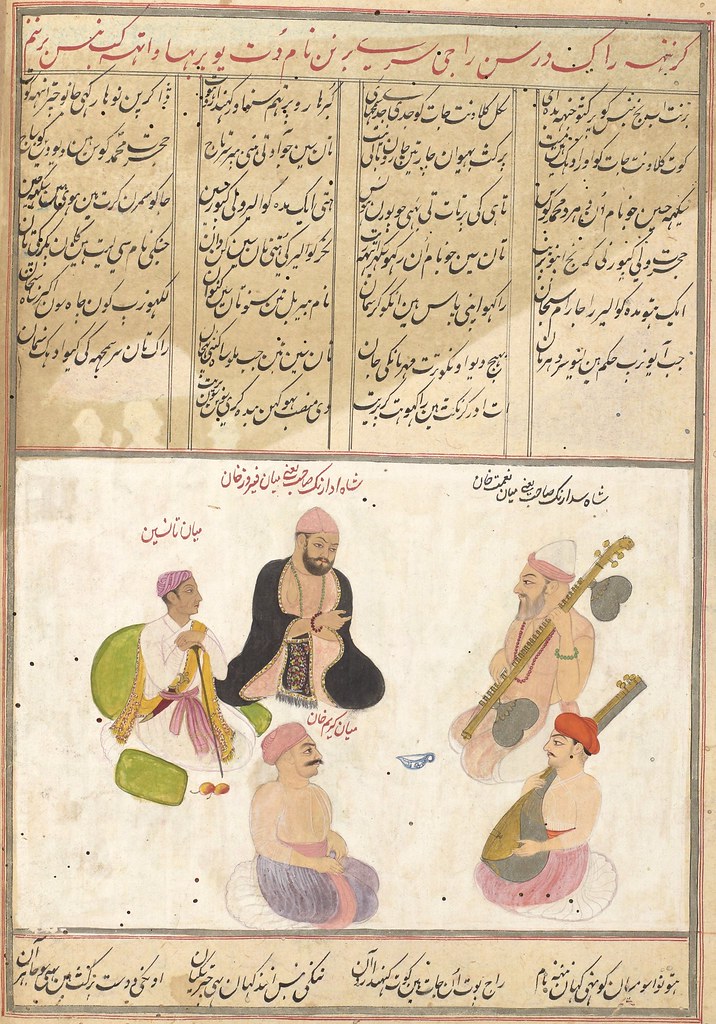
Shah Adarang (?) Sahib (Mian Firuz Khan) with Tansin, Mian Karim Khan, and musicians, Shah Sadarang Sahib and Mian Ni'mat Khan
Click through for enlarged versions. All of the miniatures were cropped from the full page layout.
The Rāgamālā manuscript {LJS 63} of 43 leaves from about 1800 is owned and hosted by the Rare Book & Manuscript Library at the University of Pennsylvania [Link updated Nov. 2014].
[homesite = Penn in Hand: Selected Manuscripts]
A further selection of paintings can be seen in the Ragamala paintings article at Wikipedia.
[It is a] text on the modes of Indian music, with visual representations of each mode as a male Raga with between four and six female Raginis. The selection and sequence of Ragas and Raginis is according to the Hanuman system and the iconographic tradition of the images is that of Amber in Rajasthan. Other miniatures depict scenes at court.
Layout: Written in 4 columns of 19 lines; text block enclosed in narrow frame of silver and double lines in red ink, outer edge of margins delineated with single line of red ink..
Script: Written in sanskrit (naskh script) in black and red ink by a single hand.
Decoration: Illuminated headpiece and 52 miniatures: 14 scenes of rulers or nobles, 1 of a lute, 36 of families of Ragas and Raginis, and 1 group of 6 small landscapes.
Origin: Written in the Deccan region of India, probably in one of the feudatory states of the Nizam of Hyderabad in 1799, with the miniatures added by 1804.
UPDATE: Royal Ontario Museum has some recordings of Raga from the 1930s to '60s.
Previously: India | music.
Lovely collection. Quick note, though, on "Desakh Ragini, with wrestlers, juggler, acrobat, and archer" -- that fellow isn't a juggler, he's using a pair of "clubbells", a traditional Persian/North Indian instrument of physical culture used for strength training by wrestlers:
ReplyDeletehttp://en.wikipedia.org/wiki/Pehlwani
http://www.youtube.com/watch?v=QPEe7uTuuho
http://www.youtube.com/watch?v=BQT0oOc4vos
Best, --J.
Thanks very much for your keen eye Jack! I will also forward your comment to Penn U. staff (the captions are all *I think* copied)
ReplyDeletegracias por la visión, curioso y enriquecedor arte
ReplyDeleteThese are beautifully composed.
ReplyDeletein wish museum the collection of ragamala were being? i need the name of the meuseum
ReplyDeleteThe images are from a manuscript at Pennsylvania University. I just updated the link in the post. You can reach the manuscript here Heba Ahmed.
ReplyDelete